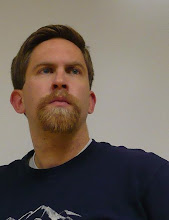Let's give credit where credit's due and be honest about a few things. Scientists and politicians have been talking for most of my adult life about the panacea of solar energy. Plants are really good at it, and it's partly the reason why we exist. Otherwise, the solar rays would probably wipe out all life on earth. However, as I told my students, even the carotenoid-chlorophyll based antennae complex of Photosynthesis isn't all that efficient.
Plants absorb light at two basic frequencies. The rest of the photons they capture are reflected back into space or released as heat or cause damage resulting in free radicals inside the leaf. I think it's funny that we think we can design something more efficient than plants when those same scientists claim plants evolved millions of years before us. We haven't even really understood how they do it for very long. We are so vain.
Let's give credit where it's due. The first notions of photovoltaic capture (synthetic photosynthesis that converts light to electricity [since that's not what plants actually do])is attributed to French physicist Edmund Bequerel in 1839 when he discovered that certain substances produced an electric current when hit by light. Now, they don't actually make electricity. The light created a flow of energy that could be harnessed. Albert Einstein was the first person to explain what was actually going on, which turned out to be very similar to what happens inside a leaf when in 1927 he described excitement of electrons off a metal surface when exposed to light. It took a century before the first prototype came off the line when in 1954 researchers Pearson, Chapin, and Fuller at Bell Labs created a cell that was 4.5% efficient.
The truth is that solar power is still in its infancy. Pure solar generation costs almost 200x as much money as any other type of electricity. This means that if your power bill using coal is $50/month, if you switched to solar power immediately, it would rise to $10000/month, which I can't afford. The cells commercially available range in efficiency from 5-20%, which means that some of them are zero improvement over the original cell made in 1954. It's still not as efficient as a chloroplast. It cannot be sustained on its own.
My father told me Wednesday night about the neighbor's project across the street. The life span of the neighbor's project, even with subsidies from teh government, meant that by the time they break even on cost the panels will need to be replaced. Without the subsidy? It's a net LOSS of money. Need I mention Solyndragate, and how that company after wasting $500 million of our money moved to China just to stay afloat? They were making panels for four times what they could get at the market, meaning they were hemmorhaging money.
People like to talk about how Nevada would be ideal for solar power. They think only of our sun exposure in terms of photon capture potential. Consider also the fact that the sun will damage the components. Soda cans bake in the desert and age much more quickly than anywhere else. Our sun literally breaks PVC pipe. Include also the wind damage, insects, sand, etc., and it's a pipe dream. Besides that, where will we get the money?
This is a temporary and piss-poor fix. I have written before about how Nevada has very little renewable energy in terms of total kilowatt hours. I also know a guy who worked very hard to put in Reid's famous Searchlight NV generator facility only to discover the jobs were temporary when they laid off all the installation crew after the plant went live. We're not even receiving that energy. It goes to California. Sounds like Boromir: "By our blood are your lands kept safe." By our land use are your cities kept lit. Everything is theoretical. None of the panels have lasted as long as they claim or generated as much energy as they hope despite claims that "they generate significantly more energy over their lifetime than the energy expended in producing them (wikipedia)". The panels may still be there in 25 years, but they won't still be generating any electricity; they'll be trash and fit right in.
Too many scientists know squat about the truth. Too many of them are into science to publish papers, win grants, prove they are smarter than other people and make tenure. Too few projects have an end-user application in mind. Too few scientists are honest. If you are, they view you as a threat. What would happen if you prove them a fraud? You will probably end up like me.
I teach my students the following, which is an original quote:
Science doesn't prove anything. It removes all other possibilities until only the truth remains.
In some research this week on melanin, I learned that although things might be true, they may not mean what we think they mean or exist for the reasons we think they do. I teach my students to be skeptical of certain scientific claims and look for the truth. I intend to be different from other scientists and find what is true even if it's not what I hope or want to be the truth. In the end, I will be true, and I will teach truth as well.






No comments:
Post a Comment